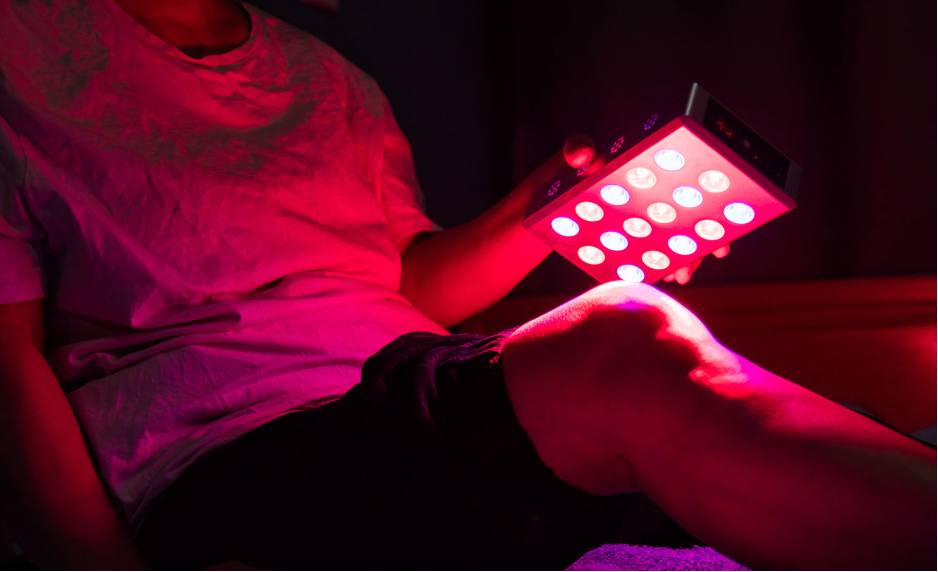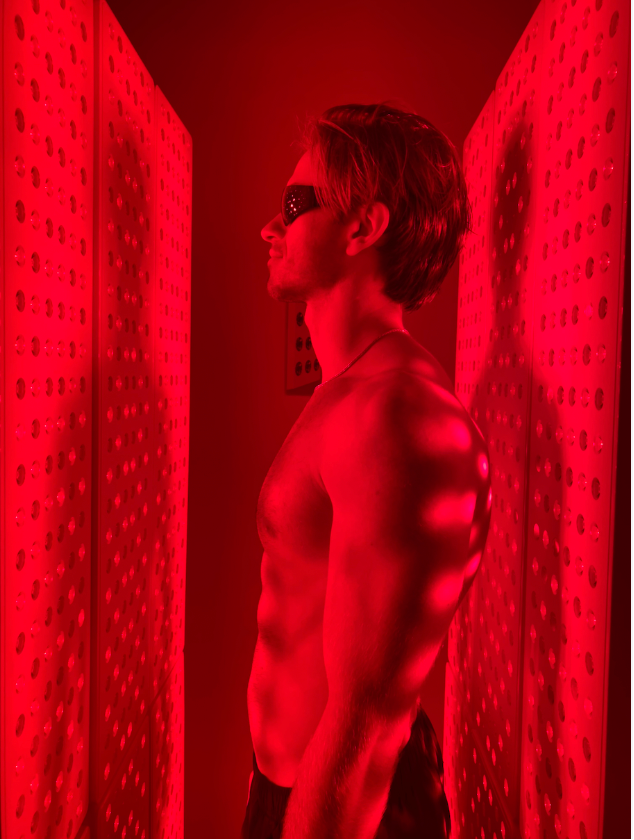Red light therapy promotes recovery
Red Light Therapy for Athletic Performance and Recovery

Examples of sports-related conditions and injuries that red light therapy can effectively treat include:
Torn cartilage
Knee injuries
Tennis elbow
Tendinitis of any joint or muscle
Back pain, soreness, strains, or sprains
Muscle strains or sprains
Rotator cuff tears
Achilles tendon strains or tears
"Shin splints" (shin pain caused by overuse of the shin muscles and tendons), common in runners and dancers
Joint, nerve, and muscle aches throughout the body
What is the main mechanism by which red light therapy helps with weight loss?
nih.gov - Phototherapy Improves Muscle Recovery
nih.gov - LLLT on Muscle Adaptation to Knee Extensor Eccentric Training
nih.gov - Muscular Pre-Conditioning Using LEDT for High-Intensity Exercise
nih.gov - Reduction of Fatigue With LLLT in Competitive Cyclists
nih.gov - Photobiomodulation Accelerates Post-Exercise Recovery
nih.gov - Photobiomodulation Therapy Improves Performance
nih.gov - When to Apply PBMT for Treadmill Endurance-Training
nih.gov - 904 nm Mitigates Effects Muscle Fatigue in Young Women
nih.gov - Exercise Performance and Markers of Exercise Recovery
nih.gov - Low-level Phototherapy to Improve Exercise Capacity
nih.gov - 810 nm Wavelength in Skeletal Muscle Performance
nih.gov - LLLT: Exploring the Role of Redox Mechanisms
nih.gov - LLLT for Skeletal Muscle Repair: A Systematic Review
harvard.edu - Effects of LED Therapy Muscle Soreness
nih.gov - Muscle contractile function and postexercise recovery
nih.gov - Effects of Low-Power Light Therapy on Wound Healing

What are the benefits of red light therapy for athletes?
I. Improving Athletic Performance
1. Increases Cellular Energy (ATP) Production
Mechanism: Red and near-infrared light are absorbed by cytochrome c oxidase in the mitochondria, which acts like a throttle for the cell's "energy factory."
Benefits for Athletes:
Increases Muscle Strength and Endurance: Muscle cells have more energy, allowing them to contract more efficiently and delaying the onset of fatigue.
Increases Peak Power Output: In sports requiring explosive power (such as sprinting and weightlifting), studies have shown that pre-treatment with red light therapy can significantly increase an athlete's power output.
2. Reduces Oxidative Stress
Mechanism: High-intensity exercise generates a large number of free radicals, leading to oxidative stress, which damages cells and triggers inflammation. Red light therapy can upregulate the body's own antioxidant defenses (such as superoxide dismutase).
Benefits for Athletes:
Protecting Muscle Cells: Reducing the oxidative damage to muscle cells caused by exercise itself allows muscles to maintain high performance levels for longer periods of time.
2. Accelerating Post-Exercise Recovery (This is the most widely used area)
1. Reducing Delayed Onset Muscle Soreness (DOMS)
Mechanism: Red light therapy can effectively reduce inflammatory factors, increase blood circulation, and help eliminate metabolic waste products (such as lactic acid).
Benefits for Athletes:
Faster Recovery from Soreness: Numerous studies have shown that using red light therapy before and after exercise can significantly reduce the severity and duration of delayed onset muscle soreness.
Shortening Recovery Time: Allowing you to return to your next high-intensity workout more quickly, thereby improving overall training efficiency.
2. Reducing Inflammation
Mechanism: Near-infrared light can penetrate deep into tissues, inhibiting the expression of pro-inflammatory cytokines (such as TNF-α and IL-6).
Benefits for Athletes:
Accelerating Tissue Repair: Inflammation is a necessary process for the body to repair itself, but excessive inflammation can delay recovery. Red light therapy helps control inflammation to an ideal, repair-promoting level.
3. Promotes Injury Healing and Tissue Repair
Mechanism:
Stimulates fibroblasts: Promotes collagen synthesis, which is crucial for repairing damaged soft tissues (such as tendons and ligaments).
Increases capillary formation: Improves blood supply to damaged areas.
Benefits for Athletes:
Faster Recovery from Sprains and Strains: Red light therapy can accelerate the healing process for both acute injuries and chronic strains (such as tennis elbow and Achilles tendinitis).
Accelerates Wound Healing: It is also effective for traumatic injuries such as skin abrasions.
III. Other Important Roles
1. Enhances Brain Health and Cognitive Function
Mechanism: Near-infrared light can penetrate the skull and positively impact the brain (known as transcranial photobiomodulation).
Benefits for Athletes:
Improves Sleep and Mood: Helps regulate circadian rhythms and promotes better sleep, which is crucial for recovery.
Neuroprotection: Helps alleviate symptoms after concussion and may provide neuroprotection.
Improves Reaction Time and Mental Clarity: May provide an advantage in sports requiring quick decision-making.
2. Improves Joint Health and Mobility
Mechanism: Increases synovial fluid by reducing inflammation within joints and stimulating healthy cartilage.
Benefits for Athletes:
Relieves joint pain (e.g., osteoarthritis).
Increases range of motion.
How Can Athletes Use Red Light Therapy?
When to Use:
Pre-Training/Competition (Pre-Treatment): Use 10-60 minutes before activity to improve performance and endurance and mitigate potential injuries.
Post-Training/Competition (Recovery): Use immediately after activity to minimize inflammation and muscle soreness, accelerating recovery.
Device Type:
Professional-Grade Large Panels/Light Pods: Designed to cover large muscle groups throughout the body, commonly used by professional sports teams, rehabilitation centers, and high-end gyms.
Handheld/Portable Devices: Designed to target specific areas (e.g., shoulders, knees) for individual use.
